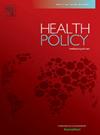20世纪50年代至2019年加拿大北部和美国阿拉斯加原住民结核病管理的比较分析
IF 3.4
3区 医学
Q1 HEALTH CARE SCIENCES & SERVICES
引用次数: 0
摘要
阿拉斯加和加拿大北部原住民在地理位置、人口和殖民历史上都有相似之处。虽然这两个地区的结核病患病率在上个世纪都有显著下降,但加拿大努纳武特地区报告说,自2000年代初以来,结核病病例令人不安地再次出现。目的在历史和社会政治背景下,使用比较卫生系统方法确定两个地区之间的相似之处并突出不同之处。我们还旨在向各国政府提供关于采用最佳做法和采取有效政策改善结核病管理的见解,以实现到2035年世卫组织终止结核病目标。方法本研究采用世卫组织卫生系统构建模块框架的修改版本,通过上下文视角评估这两个地区的结核病规划。对学术文献、政府报告和开源文件(1950-2019)的范围审查启发了对这些文件的审查。结果在加拿大北部土著地区,由于医疗投资有限、依赖疏散政策和劳动力短缺,结核病控制受到阻碍。住房过度拥挤和粮食不安全等社会决定因素加剧了这一问题。相比之下,阿拉斯加早期的基础设施发展促成了当地医疗保健服务、劳动力培训和社区项目的建立,从而更有效地管理了结核病。结论经济不发达、初级卫生保健不足、社区卫生服务薄弱、对医疗旅行的依赖以及持续存在的社会决定因素阻碍了努纳武特地区结核病的控制。阿拉斯加州和加拿大北部土著居民结核病应对情况的比较突出了资源充足、社区积极参与的地方和区域卫生保健的必要性。本文章由计算机程序翻译,如有差异,请以英文原文为准。
Comparative analysis of tuberculosis management in Indigenous North Canada and Alaska, USA from 1950s to 2019
Background
Both Alaska and Indigenous North Canada share similarities in geographic location, population, and a history of colonization. While both regions have seen a significant decline in tuberculosis (TB) prevalence over the last century, Nunavut, Canada, has reported a troubling resurgence of TB cases since the early 2000s.
Objective
To identify analogies and highlight dissimilarities between the two regions using a comparative health systems approach within the historical and sociopolitical contexts. We also aim to provide governments with insights on employing best practices and adopting effective policies for improved TB management to achieve the WHO END-TB target by 2035.
Method
This study applied a modified version of the WHO Health Systems Building Blocks Framework to assess TB programs in both regions through a contextual lens. A scoping review inspired review of academic literature, government reports, and open-source documents (1950–2019) informed the analysis.
Results
In Indigenous Northern Canada, TB control is hindered by limited healthcare investment, reliance on evacuation policies, and workforce shortages. Social determinants, such as overcrowded housing and food insecurity, exacerbate the issue. In contrast, Alaska's early infrastructure development led to the establishment of local healthcare services, workforce training, and community-based programs, resulting in more effective TB management.
Conclusion
The underdeveloped economy, inadequate primary healthcare, weak community health services, dependence on medical travel, and persistent social determinants hinder TB control in Nunavut. The comparison of TB responses in Alaska and Indigenous Northern Canada highlights the necessity for well-resourced local and regional healthcare that actively involves the community.
求助全文
通过发布文献求助,成功后即可免费获取论文全文。
去求助
来源期刊

Health Policy
医学-卫生保健
CiteScore
6.40
自引率
6.10%
发文量
157
审稿时长
3-8 weeks
期刊介绍:
Health Policy is intended to be a vehicle for the exploration and discussion of health policy and health system issues and is aimed in particular at enhancing communication between health policy and system researchers, legislators, decision-makers and professionals concerned with developing, implementing, and analysing health policy, health systems and health care reforms, primarily in high-income countries outside the U.S.A.
 求助内容:
求助内容: 应助结果提醒方式:
应助结果提醒方式:


